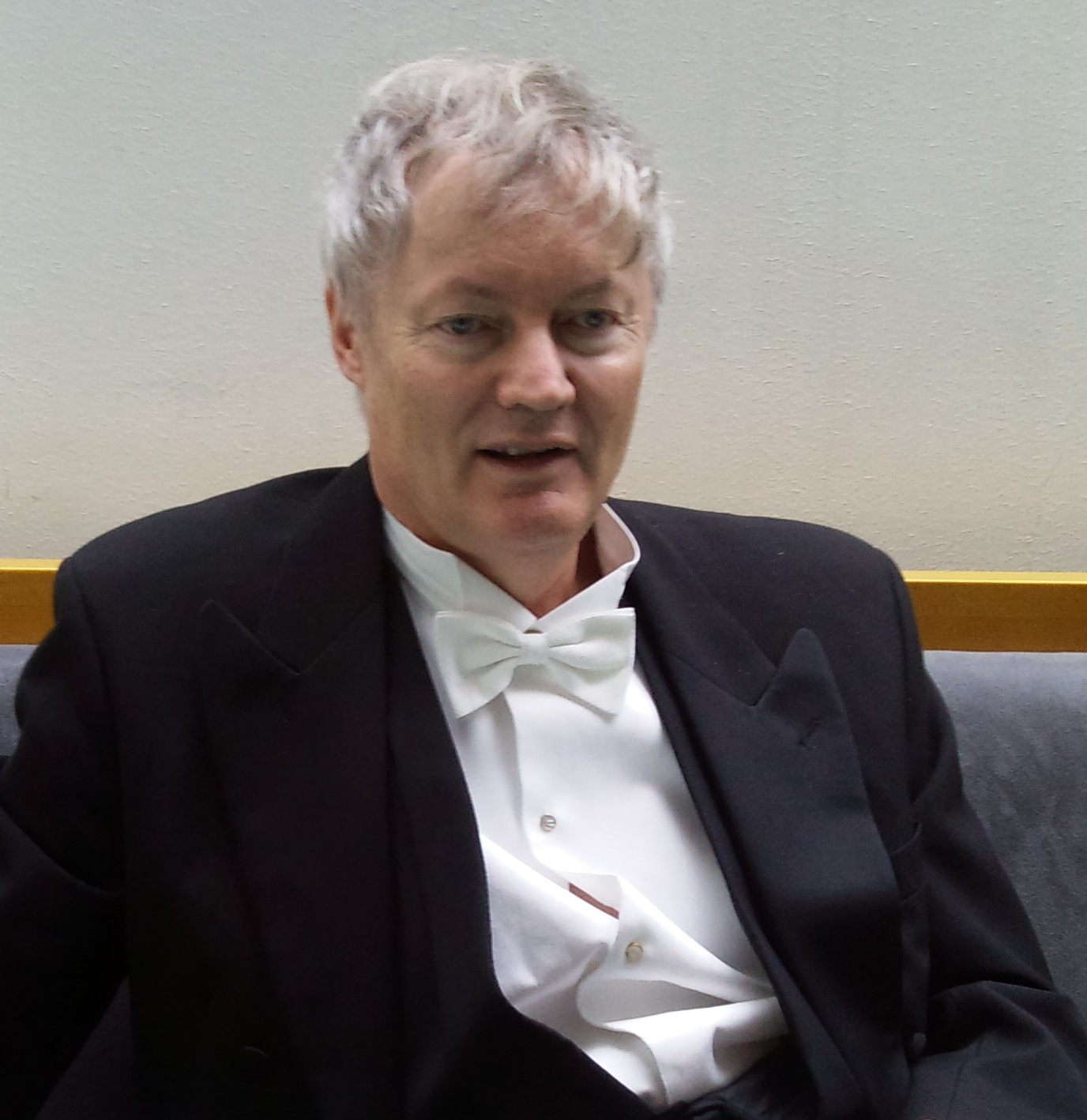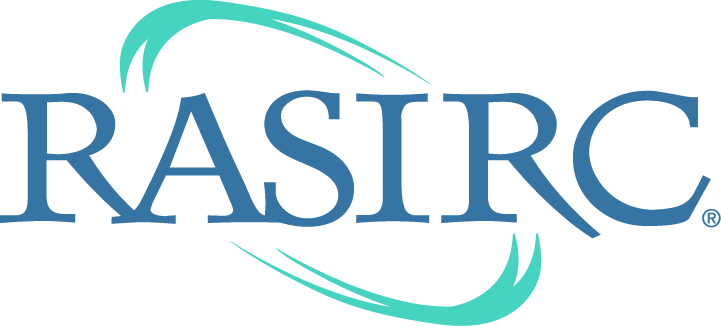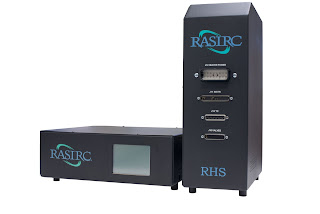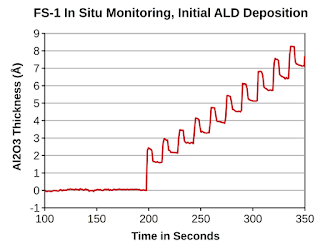Scientists
from École polytechnique fédérale de Lausanne (EPFL) in Switzerland has
reported a low cost system to split carbon dioxide to carbon monoxide
and oxygen using an ALD tin oxide catalyst on copper oxide nanowires.
The devis is working at a rather efficiency of 13.4%, which opens up new
paths to get rid of the man made CO2 that is currently heating up our
planet and causing extreme weather conditions everywhere - believe it
or not.
The
research comes out of the famous laboratory of Prof. Michael Grätzel at
EPFL, one of the worlds top 10 most cited chemists and most certainly
the most cited chemist from Dorfchemnitz in Saxony, Germany. One of his
most famous invention is the so called Gräzel cell - a dye-sensitized
solar cell, which is a low-cost version of thin film solar cells and he
was awarded the 2010 Millennium Technology Prize for this invention.
Michael Grätzel (born 11 May 1944, in Dorfchemnitz, Saxony, Germany) is
a professor at the École Polytechnique Fédérale de Lausanne where he
directs the Laboratory of Photonics and Interfaces [Wikipedia].
Using
Earth-abundant materials, EPFL scientists have built the first low-cost
system for splitting CO2 into CO, a reaction necessary for turning
renewable energy into fuel.
The future of
clean energy depends on our ability to efficiently store energy from
renewable sources and use it later. A popular way to do this is to
electrolyze carbon dioxide to carbon monoxide, which is then mixed with
hydrogen to produce liquid hydrocarbons like gasoline or kerosene that
can be used as fuel. However, we currently lack efficient and
Earth-abundant catalysts for the initial splitting of CO2 into CO and
oxygen, which makes the move into
renewable energy
expensive and prohibitive. EPFL scientists have now developed an
Earth-abundant catalyst based on copper-oxide nanowires modified with
tin oxide. The system can split CO2 with an efficiency of 13.4%. The work is published in
Nature Energy, and can help worldwide efforts to synthetically produce carbon-based fuels from CO2 and water.
Read more at:
https://phys.org/news/2017-06-low-cost-carbon-dioxide.html#jCpv
Using
Earth-abundant materials, EPFL scientists have built the first low-cost
system for splitting CO2 into CO, a reaction necessary for turning
renewable energy into fuel.
The future of
clean energy depends on our ability to efficiently store energy from
renewable sources and use it later. A popular way to do this is to
electrolyze carbon dioxide to carbon monoxide, which is then mixed with
hydrogen to produce liquid hydrocarbons like gasoline or kerosene that
can be used as fuel. However, we currently lack efficient and
Earth-abundant catalysts for the initial splitting of CO2 into CO and
oxygen, which makes the move into
renewable energy
expensive and prohibitive. EPFL scientists have now developed an
Earth-abundant catalyst based on copper-oxide nanowires modified with
tin oxide. The system can split CO2 with an efficiency of 13.4%. The work is published in
Nature Energy, and can help worldwide efforts to synthetically produce carbon-based fuels from CO2 and water.
Read more at:
https://phys.org/news/2017-06-low-cost-carbon-dioxide.html#jCp
Using
Earth-abundant materials, EPFL scientists have built the first low-cost
system for splitting CO2 into CO, a reaction necessary for turning
renewable energy into fuel.
The future of
clean energy depends on our ability to efficiently store energy from
renewable sources and use it later. A popular way to do this is to
electrolyze carbon dioxide to carbon monoxide, which is then mixed with
hydrogen to produce liquid hydrocarbons like gasoline or kerosene that
can be used as fuel. However, we currently lack efficient and
Earth-abundant catalysts for the initial splitting of CO2 into CO and
oxygen, which makes the move into
renewable energy
expensive and prohibitive. EPFL scientists have now developed an
Earth-abundant catalyst based on copper-oxide nanowires modified with
tin oxide. The system can split CO2 with an efficiency of 13.4%. The work is published in
Nature Energy, and can help worldwide efforts to synthetically produce carbon-based fuels from CO2 and water.
Read more at:
https://phys.org/news/2017-06-low-cost-carbon-dioxide.html#jCp
Using
Earth-abundant materials, EPFL scientists have built the first low-cost
system for splitting CO2 into CO, a reaction necessary for turning
renewable energy into fuel.
The future of
clean energy depends on our ability to efficiently store energy from
renewable sources and use it later. A popular way to do this is to
electrolyze carbon dioxide to carbon monoxide, which is then mixed with
hydrogen to produce liquid hydrocarbons like gasoline or kerosene that
can be used as fuel. However, we currently lack efficient and
Earth-abundant catalysts for the initial splitting of CO2 into CO and
oxygen, which makes the move into
renewable energy
expensive and prohibitive. EPFL scientists have now developed an
Earth-abundant catalyst based on copper-oxide nanowires modified with
tin oxide. The system can split CO2 with an efficiency of 13.4%. The work is published in
Nature Energy, and can help worldwide efforts to synthetically produce carbon-based fuels from CO2 and water.
Read more at:
https://phys.org/news/2017-06-low-cost-carbon-dioxide.html#jCp
Using
Earth-abundant materials, EPFL scientists have built the first low-cost
system for splitting CO2 into CO, a reaction necessary for turning
renewable energy into fuel.
The future of
clean energy depends on our ability to efficiently store energy from
renewable sources and use it later. A popular way to do this is to
electrolyze carbon dioxide to carbon monoxide, which is then mixed with
hydrogen to produce liquid hydrocarbons like gasoline or kerosene that
can be used as fuel. However, we currently lack efficient and
Earth-abundant catalysts for the initial splitting of CO2 into CO and
oxygen, which makes the move into
renewable energy
expensive and prohibitive. EPFL scientists have now developed an
Earth-abundant catalyst based on copper-oxide nanowires modified with
tin oxide. The system can split CO2 with an efficiency of 13.4%. The work is published in
Nature Energy, and can help worldwide efforts to synthetically produce carbon-based fuels from CO2 and water.
Read more at:
https://phys.org/news/2017-06-low-cost-carbon-dioxide.html#jCp
Below the abstract and the link to the Nature Energy publication
Solar conversion of CO2 to CO using Earth-abundant electrocatalysts prepared by atomic layer modification of CuO
Marcel
Schreier, Florent Héroguel, Ludmilla Steier, Shahzada Ahmad, Jeremy S.
Luterbacher, Matthew T. Mayer, Jingshan Luo & Michael Grätzel
Nature Energy 2, Article number: 17087 (2017)
doi:10.1038/nenergy.2017.87 


Abstract:
The solar-driven electrochemical reduction of CO2 to fuels and
chemicals provides a promising way for closing the anthropogenic carbon
cycle. However, the lack of selective and Earth-abundant catalysts able
to achieve the desired transformation reactions in an aqueous matrix
presents a substantial impediment as of today. Here we introduce atomic
layer deposition of SnO2 on CuO nanowires as a means for changing the
wide product distribution of CuO-derived CO2 reduction electrocatalysts
to yield predominantly CO. The activity of this catalyst towards oxygen
evolution enables us to use it both as the cathode and anode for
complete CO2 electrolysis. In the resulting device, the electrodes are
separated by a bipolar membrane, allowing each half-reaction to run in
its optimal electrolyte environment. Using a GaInP/GaInAs/Ge
photovoltaic we achieve the solar-driven splitting of CO2 into CO and
oxygen with a bifunctional, sustainable and all Earth-abundant system at
an efficiency of 13.4%



%20(1).png)






















